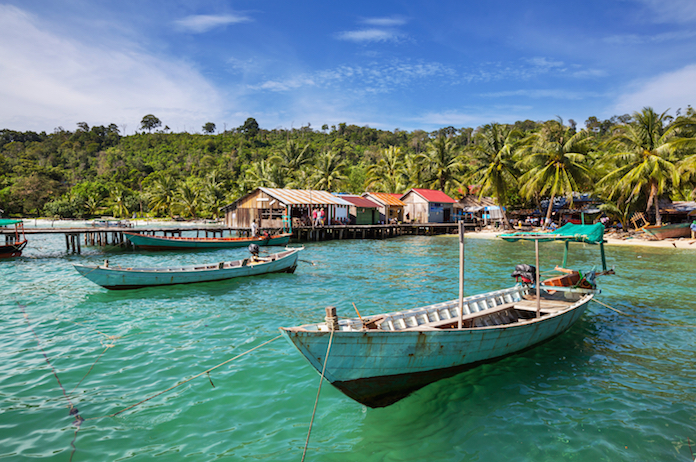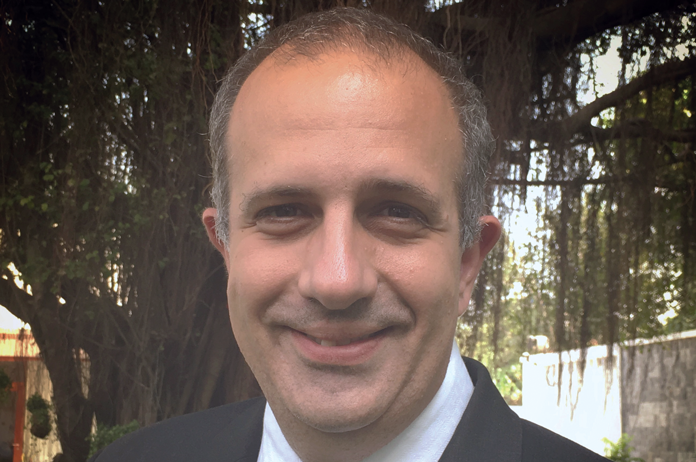One-On-One With Thalias' Arnaud Darc On The Tourism Market

The B2B team of writers turns to Arnaud Darc, one of the most well known and respected Frenchmen in Phnom Penh, to learn more about the state of Cambodia’s tourism industry. Darc is the CEO of Thalias, a company that operates some of Cambodia’s leading hospitality outlets, such as Topaz and Malis Restaurant.
B2B: What are some of the initiatives being undertaken by the private and public sectors to further develop Cambodia as a destination, attract more foreign visitors and make them stay longer?
Darc: The Cambodian government recognises the importance of the tourism sector and has made developing and improving it a priority. In 2006, it introduced an electronic system in 25 languages to facilitate tourists’ online visa applications. But that e-visa system is still limited, and it is not accepted at every border checkpoint. To promote itself as a tourist destination, Cambodia has launched a marketing campaign called “Cambodia – Kingdom of Wonder”, and the campaign “Clean city, Clean resort, Good service”, which also aims to promote the country’s clean cities and resorts and its good-quality services.
In 2015, international tourists arrival reached almost 5 million, and the government of Cambodia has set the target for 2020 to 8 million foreign visitors. Even though there is a trend to promote ASEAN as a single destination, the implementation of a common visa for visitors travelling in any member-country is yet to materialise. Cambodia is still among some of the ASEAN member states to require a visa for most of the non-ASEAN tourists.
B2B: What are other interesting initiatives to promote tourism that we should be aware of?
Darc: The ASEAN Open Skies Policy, which is a component of ASEAN’s economic integration, is also an important initiative as it will boost regional air transport connectivity and facilitate the movement of people. At the national level, the launch of flights between Siem Reap, Phnom Penh and Sihanoukville has contributed to shorten the distance between those main tourist destinations. The emergence of low-cost carriers in the region also makes traveling to Cambodia much more convenient and affordable. Currently, Bangkok and Ho Chi Minh International Airports are the main gateways for tourists coming to visit Cambodia, but we hope to see sustainable direct routes from Europe to allow international tourists to reach Cambodia without having to stop in neighboring countries.
The most well-known attraction in Cambodia still remains Angkor Wat and the Angkor Archeological Park, but Cambodia bays were inaugurated into The Most Beautiful Bays in the World Club, recognising the potential of the coastal zone. The potential to diversify the destinations is obvious. The natural attraction zones can provide an alternative to cultural tourism, including the Tonle Sap Biodiversity area, and ecotourism zones in the northeast of Cambodia.

B2B: Could sporting tournaments (e.g. golf, marathons, rock climbing, extreme sports) be considered/developed as possible tourism attractions for Cambodia? What would this entail?
Darc: There are golf facilities mainly located in Phnom Penh and Siem Reap areas, but there are regional or international tournament that brings the spotlights on the Cambodian golf scene. The main marathons are the Phnom Penh international half marathon, the Sihanoukville international half marathon, and the Angkor Marathon. Those events mainly aim to raise awareness on the protection of nature rather than sports performance. The offer of extreme sports is not developed sufficiently. There are a few places in the ecotourism area (Mondulkiri and Ratanakiri) and in the coastal area that can be considered as offering such activities, but tourists don’t go to this places solely to enjoy these sports.
B2B: Apart from the staple destinations (such as Siem Reap, Phnom Penh and Sihanoukville), what new locations/zones are being developed or promoted as destinations and what offerings/attractions are available in each?
Darc: There are annual activities that aim to promote different destinations, such as the Water Festival or the River Festival. Those initiatives launched by the authorities mostly target the locals. The Cambodia Travel Mart, supported by the Ministry of Tourism, targets the international market. It is designed to attract international tourism operators to promote Cambodia as a destination. Synergies may be developed between those initiatives. Developing new destinations is not necessarily promoting new cities, but also promoting the diversification of landmarks within a destination. This is perfectly the case for a destination like Siem Reap, where the riverside still has the potential to become the most favorite landmark of the city beside the temples. In order to achieve a goal of that kind, the public and private sector shall be able to coordinate their efforts toward a mutual and common objective.
Developing new destinations also come with constraints. Access to skilled labor, structure of the supply chain, logistics, safety and public order and food security are significant constraints and must be taken into consideration. Furthermore, developing new destinations can bring the risk of modifying the local equilibrium, endangering the environment, or destabilising the local community. In this respect, the government must ensure that sustainable tourism practices are in place to encourage the conservation of natural resources and the protection of the environment and Cambodia’s cultural heritage.
B2B: You mention a push to make Cambodia cleaner and greener. What are some of the concrete actions taken by the private and public sectors in this regard?
Darc: Part of a possible marketing strategy to promote Cambodia is to make it "Clean & Green", getting rid of street trash and pushing forward eco-friendly initiatives. How are the private and public sectors working together to achieve this cleaner and greener Cambodia? The main environmental concerns are the increasing problems of solid waste and river pollution. Through the Government Private Sector Forum, a working group dedicated to raise environmental problems has been established. This working group coordinates the actions punctually conducted to clean specific areas within the cities. The private sector also encourages each business to reduce their impact on the environment, for instance, by using alternatives to plastic.
This interview has been edited for length and clarity